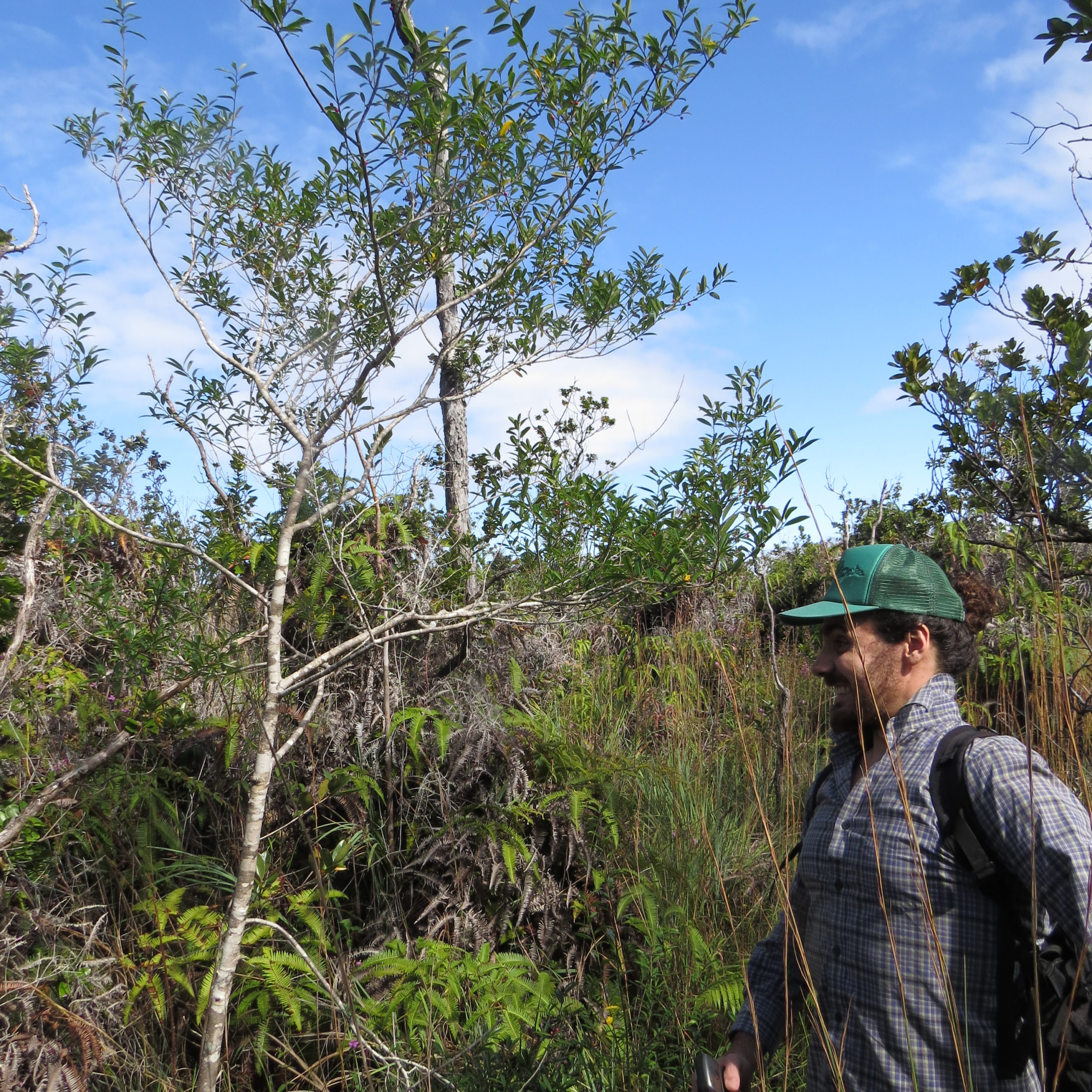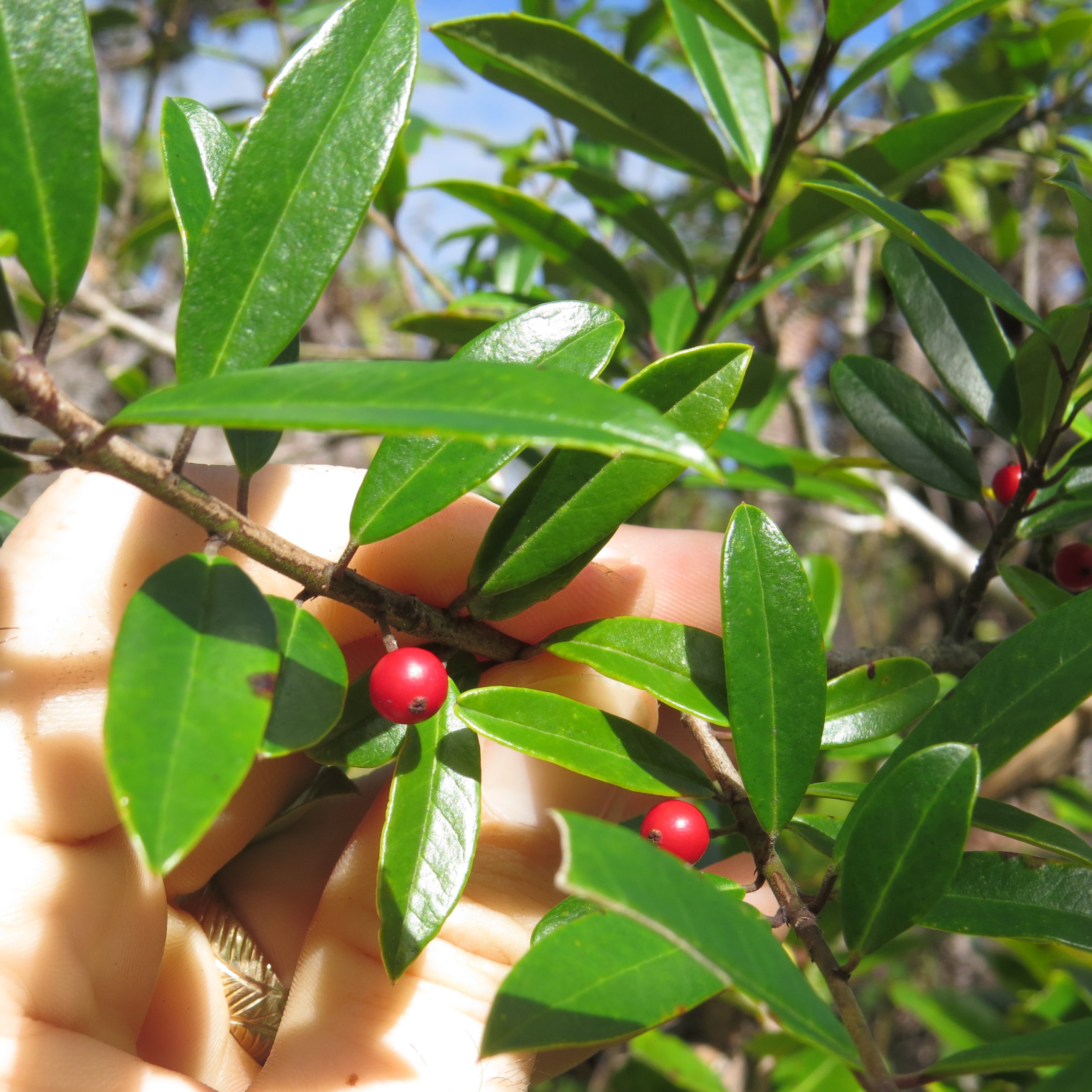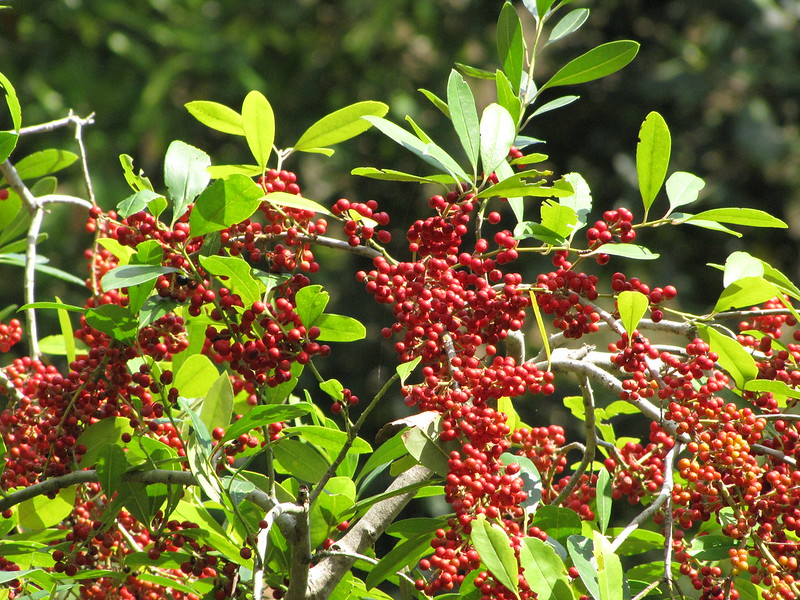
Dahoon Holly
REPORT IF SEEN: Contact BIISC to schedule a free removal
Dahoon Holly (Ilex cassine) is a small, evergreen tree in the Holly family. Native to the Southern United States, this plant is widely cultivated on the mainland. Dahoon Holly is currently known to be naturalized on O‛ahu and Hawai‛i Island. Dahoon Holly was intentionally planted by territorial and state foresters along Highway 11 from ‛Ōla‛a to Volcano from 1940-1960. When it was first collected as naturalized in 1985, it was described as a small but growing population.
Impacts:
- Shade tolerant, could spread into native forests
- Seeds may remain viable in the soil for two years
- Able to resprout after cutting and pruning
- May be slightly toxic
- Seeds can be spread by birds, waterways, and people
Description:
- Small, evergreen tree 20-30 ft. high
- Stiff, glossy leaves are dark green on top and a pale green underneath
- Flowers are small and emerge in clusters; male-greenish white; female-white
- Fruits are 1/4in. in diameter and range from bright red to bright yellow
- Bark is thin and dark gray
Dahoon Holly (Ilex cassine)
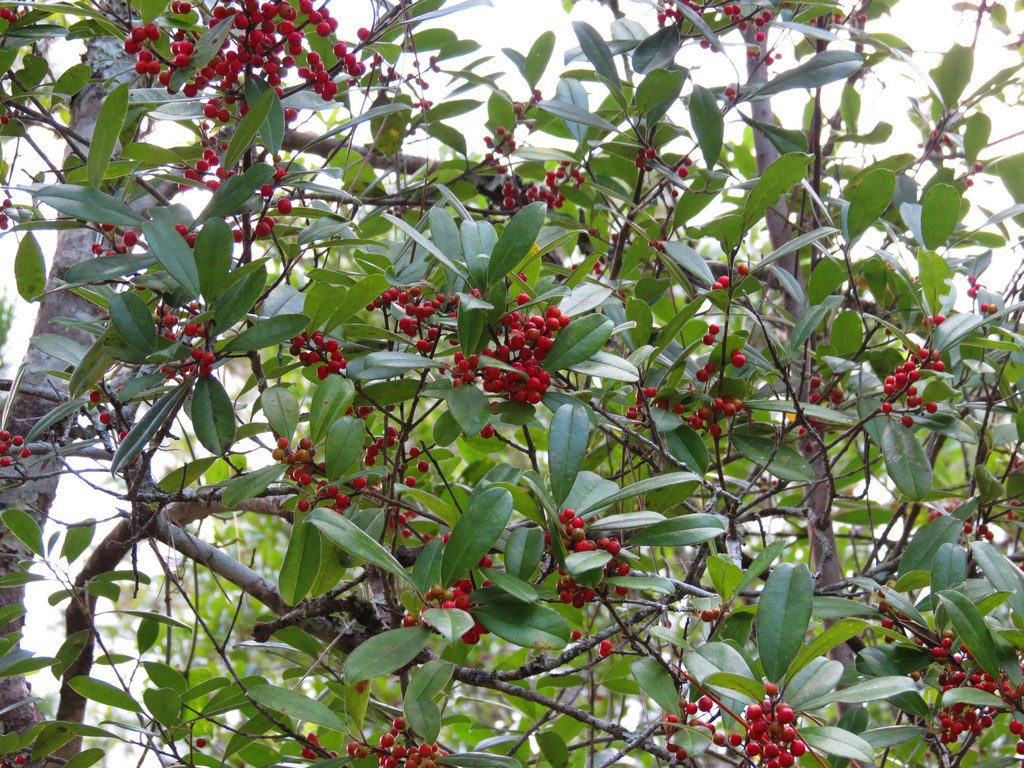

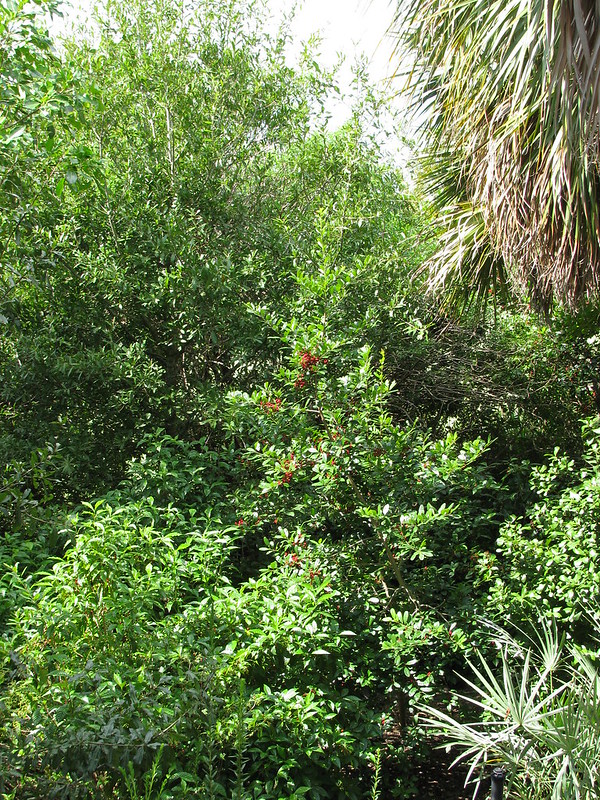
Photos: Forest & Kim Starr
BIISC’s Control Efforts
BIISC’s Early Detection team found two distinct populations along Highway 11 in 2009 and 2014. One was in the Aloha Estates subdivision and highway easement and the other was across the highway from Akatsuka Orchid Farm. Our crews have controlled the Dahoon Holly plants in these areas and they revisit these sites on a periodic basis to monitor the seed bank. Larger plants are controlled using chemical control and seedlings are removed by hand. BIISC also utilizes UAVs to obtain aerial imagery of these sites to identify missed plants.
